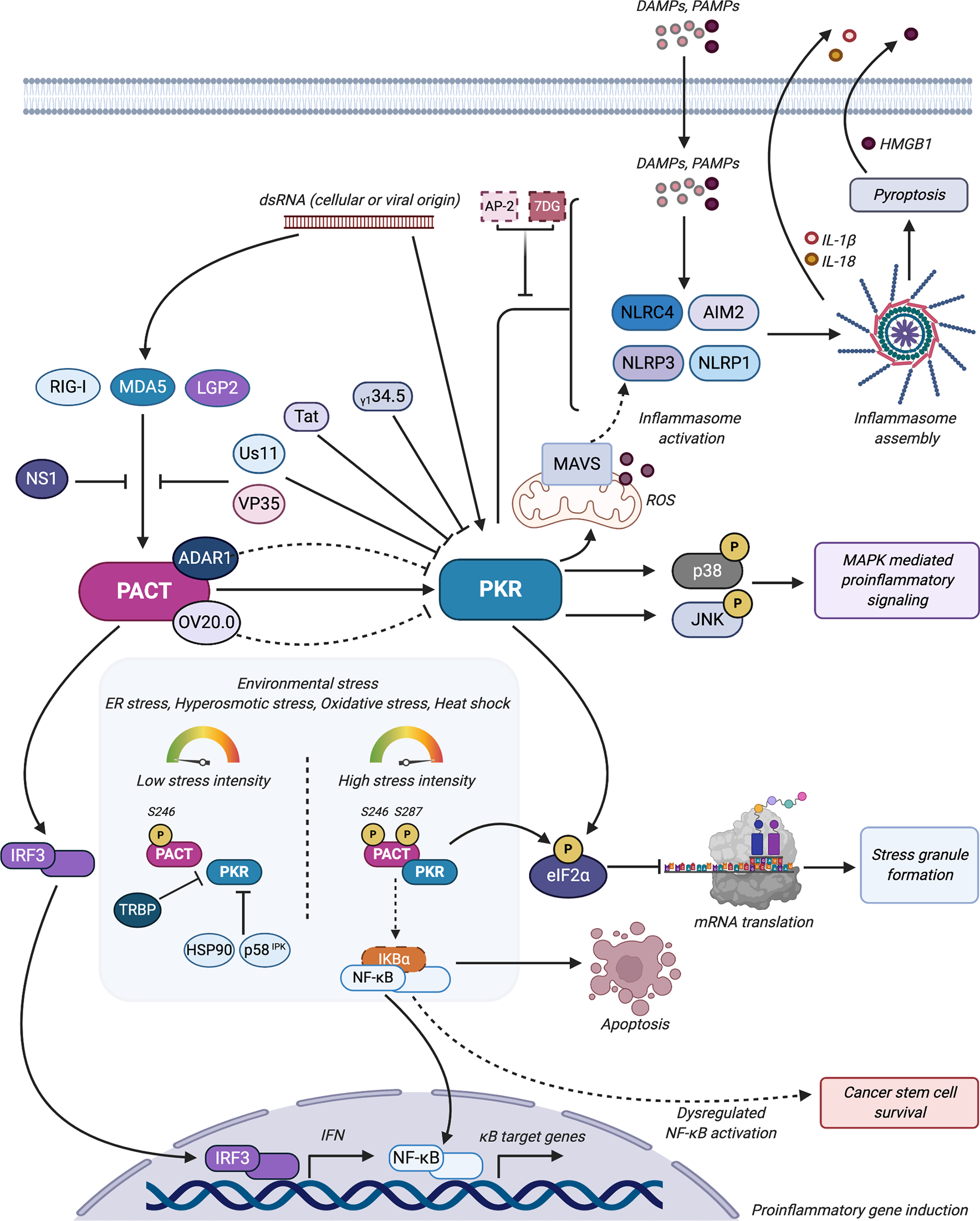Figure 2.

PACT and PKR are involved in several aspects of inflammatory signaling. Long dsRNA of cellular or viral origin activates PKR; PKR subsequently phosphorylates eIF2α and inhibits general protein synthesis and stimulates stress granule formation. PKR also stimulates MAPK mediated proinflammatory signaling through the phosphorylation and activation of the MAPKs p38 and JNK. As such, PKR’s’ antiviral activities are targeted by viral factors such as Us11, Tat, VP35, and γ134.5. Controversial evidence suggests that PKR also stimulates inflammasome activation and assembly through its interactions with DAMP/PAMP sensors NLRP3, NLRP1, NLRC4, and AIM2. PACT-mediated PKR activation generates ROS that drive MAVS-associated NLRP3 inflammasome activation. Inhibitors 2-AP and 7DG appear to inhibit PKR’s inflammasome-stimulatory activity. </P/> PACT modulates RIG-I and MDA5 mediated IFN production through direct interactions and with LGP2; PACT’s stimulatory activity on RLR-mediated pro-inflammatory signaling is targeted by the NS1, Us11, and VP35 viral proteins. Interactions between PACT and the ISG-encoded ADAR1 or the viral-encoded OV20.0 subvert PACT-mediated PKR activation during viral infection. During environmental stress conditions, PACT, which is constitutively phosphorylated on Serine 246, is also phosphorylated on Serine 287 and interacts strongly with PKR, leading to activation of PKR’s kinase activity and subsequent eIF2α phosphorylation and translation inhibition. Increased intensity of environmental stress conditions leads to increased proinflammatory gene induction and apoptosis via NF-κB activation. Dysregulation of NF-κB activation through aberrant PACT-PKR signaling have been implicated in cancer stem cell proliferation and survival. PACT-mediated PKR activation is modulated in these scenarios by other cellular proteins like TRBP, HSP90, and p58IPK. Figure was created using Biorender.com.
